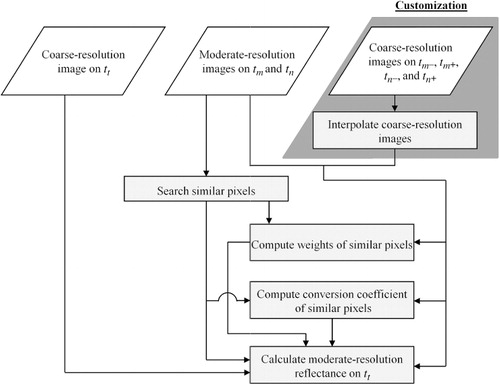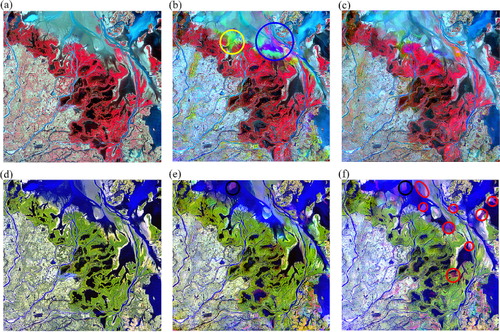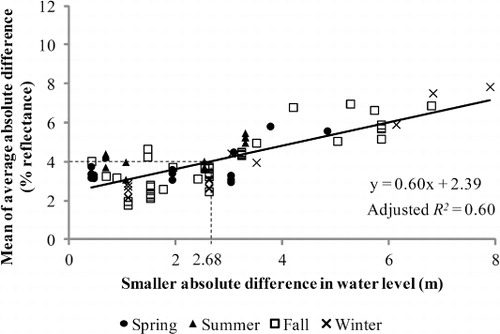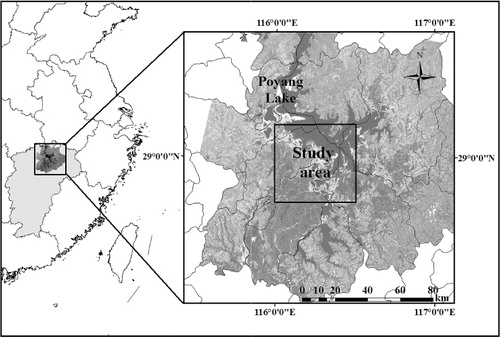Figures & data
Table 1. Acquisition dates of the input Landsat-5 TM and Terra MODIS images for the customized model.


Table 2. AAD and AD between observed reflectance and blended reflectance from the customized model and ESTARFM for 28 October 2004.
Table 3. Adjusted correlation coefficient (adjusted R 2 ) between factors in input images and AAD between observed and blended reflectance.


